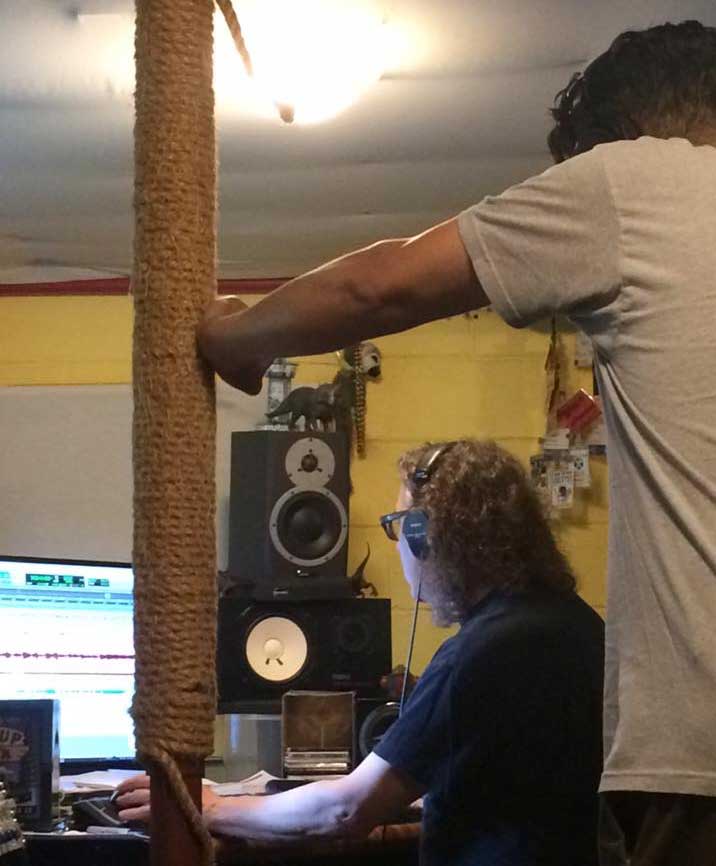
I recently was interviewed by Michelle Bacon of The Bridge. She is doing a series called Making the Band, and one installment was about recording studios. She contacted me as an example of a home studio servicing outside clients. Below are her questions, in bold, and my answers.
Of course I spouted off ten times as much as she could use. I’m posting it here for potential clients. If you are considering recording here at Largely Studios, I think you should know how I feel about the recording process. If you have any questions, please use the Contact page and I’ll get back to you right away.
– What are the advantages of having a home studio vs a traditional studio?
The biggest advantage of a home studio over a traditional one is the lack of overhead expenses. It’s hard enough to pay for equipment and software without also having to make rent on all or part of a building.
In some ways it’s also an advantage that my studio is part of my home. My clients are my guests. They meet my girlfriend, get barked at by the dog, and the cats like to come in and pretend they can be petted.
A lot of the relationship between the engineer/producer and the client is a matter of trust. In many ways, they are asking me to put their dreams into a concrete form accessible to the public. I can’t help but think that the act of inviting them into my somewhat chaotic house breaks down some of the barriers between us right away. As Steve Martin said in The Jerk, “You can tell a lot about a person by the way they live.” I think that helps the artists feel safer to show me (and the world) who they are, and that helps keep the music authentic. The most consistent comment I hear from clients is that they felt comfortable, that I made the process easy for them. That makes me feel good.
In my current setup, I don’t have a separate control room. That makes it harder to evaluate the sounds being captured, which is certainly an issue. On the other hand, I think there’s a psychological value to the fact that I’m right there with the rest of the musicians. They see the same screen I’m looking at, they see when I screw up or miraculously get it right. I’m not this voice from on high, coming from the other side of the glass. It’s not the best way to do it, but it’s what I have to work with and not without its own benefits.
– What is your role as an engineer, and/or a producer?
It’s a blending of art and science, which is probably why I like it so much. There’s the technical side, of course—I have to be able to capture the performance and turn it into files that can be burned to a disc or streamed through a player. In a deeper sense, I’m there to help the artist develop and fulfill their vision.
You have to understand a certain amount of physics, the way sound is made and perceived, as well as how to use a lot of software and hardware, or software that emulates hardware. Beyond that, you have to understand what makes a song unique and try to bring that out. Try to understand what the songwriter is saying and figure out the best way to get an audience to feel it as well.
– Playing a show offers an immediate response from an audience. What do you do to make a recording translate to an audience?
I try to listen, and as much as possible, listen as though I’ve never heard this song or recording before. That can be difficult when you’re in the fourth hour of mixing a three-minute song! But I always try to imagine it just came up on the radio or Spotify or whatever. Does it sound like it belongs there? Why not? Then I try to work on whatever seems to be a deficit. Listening to other records can be good, too. Why does theirs sound so much better than ours? Every song has a core, a little nugget that attracted me in the first place. How do I bring that out and make it front and center?